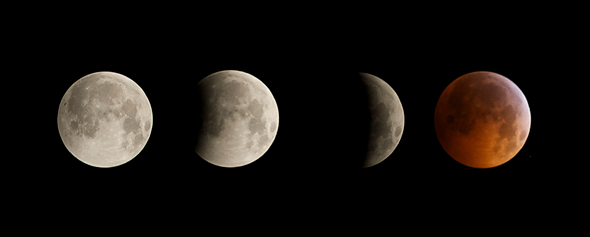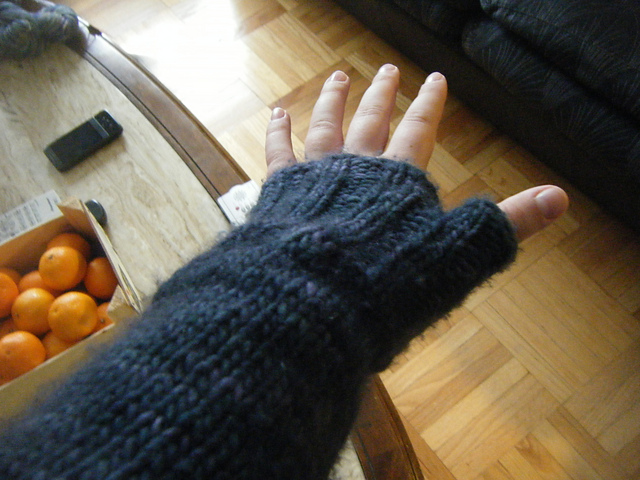... but instead ended up taking three weeks to make, which, to be fair, is still a pretty short time to make a sweater in, at least for me. I started making the Three-week sweater when my mom came down for a visit about a month ago because I had her Christmas present on the needles, and so couldn't work on that. Also, I've been meaning to make this sweater since before I even learned to knit.
The sweater is
Painted Lady by Jenifer Paulousky from the Anticraft. It's a top-down raglan crop-top with thumb holes, and I think it was that last feature which attracted me to the pattern more than anything else. When I was in high school, all my friends had hoodies that had thumb holes. For some reason, I never bothered to go shopping for one (and they were probably out of my teenage budget anyway), so I did without thumb holes with envy in my heart. But heck, now I knit, so I can make thumb holes in all my sweaters if I want!
My sweater started its life as four skeins of
Malabrigo Merino Worsted Yarn that was given to me by a friend who was clearing out her stash (I've gotten some of my best yarns that way). It's absolutely delightful, both to knit with and to wear! The labels had disappeared by the time I inherited the yarn, and I'm fairly sure that one of the skeins was from a different dye lot, but I didn't care so much. Seriously... if you can get your hands on some of this, it's so soft and squishy and warm and wonderful...
Anyway, onto the sweater. I followed the pattern for a medium until I got to the underarms, where I tried it on... it was kind of baggy, and I worried that the ribbing would float around under my bust instead of clinging to my ribs, so I decreased a few times, which seemed to do the trick, knit the ribbing and bound off the body. This whole process took me six days, and I figured I could finish the sleeves in another day or two.
Turns out sleeves are boring because they took another week by themselves. I knit them using the magic loop method to knit both at the same time, and finished off the cuff and thumb holes with double-pointed needles. And of course, accidentally knit one of the thumb holes backwards the first time, but that was easy enough to rip back and fix. I should note that I used a smaller needle size for the different ribbings because apparently that makes them look better (and I guess it did).
I wore the sweater to school and upon asking what people thought, some said it would look better as a full-length sweater, and others thought it looked fine as is. The tipping point was probably that both my mom and the boyfriend thought it looked silly as a crop top. So, upon the advice of a friend, I just undid the bind-off and continued the ribbing until the sweater was about hip-length. This was also the point when I ran out of yarn... convenient! Seriously, I had to pull around the bound-off stitches so that I'd have enough yarn to bind off the last two or three stitches. I think they call that knitting on fumes.

In the end, I'm very happy with this sweater. Even if it wasn't as quick as I had hoped, I'm very pleased with the modifications I made, and this was worth taking a little extra time. I must say, the ribbed body is much more flattering than a crop-top and to tell the truth, my tummy did get cold when wearing it at the shorter length. After having worn it for about a week now, the malabrigo is pilling a lot, but I think this is a price I'm willing to pay for such a soft, warm sweater!





















